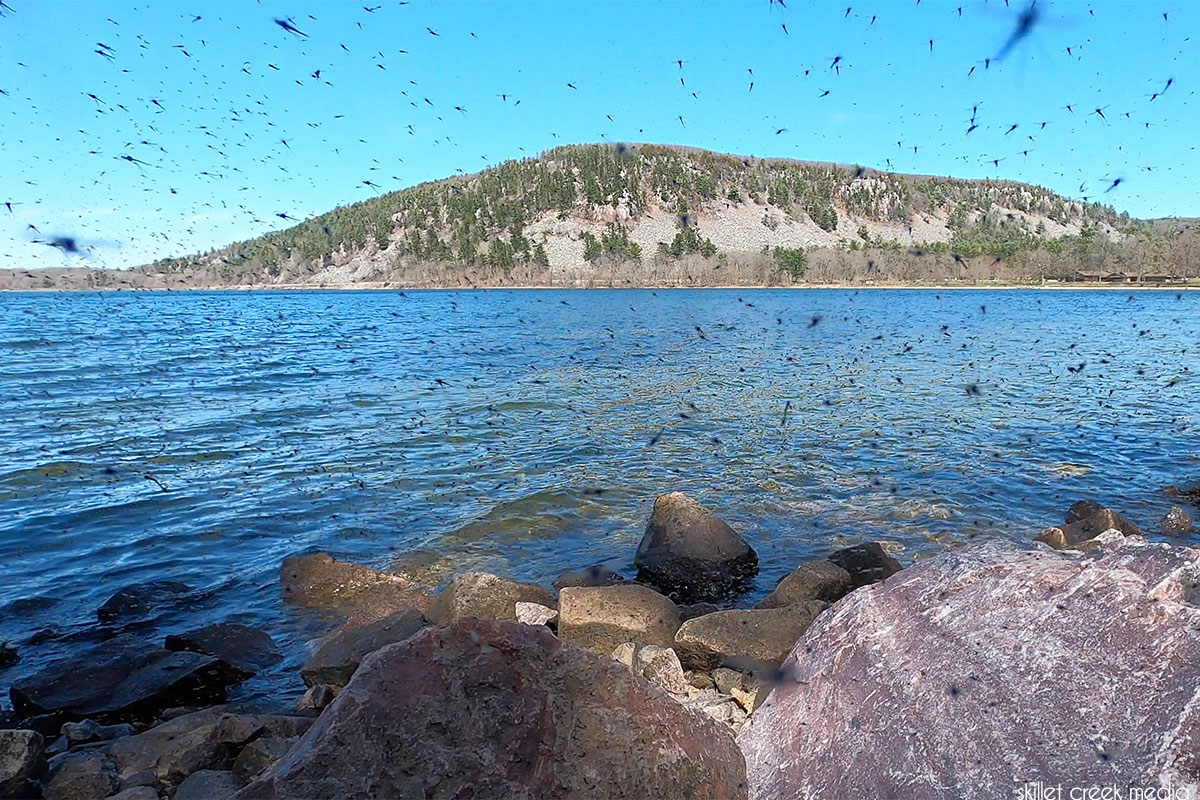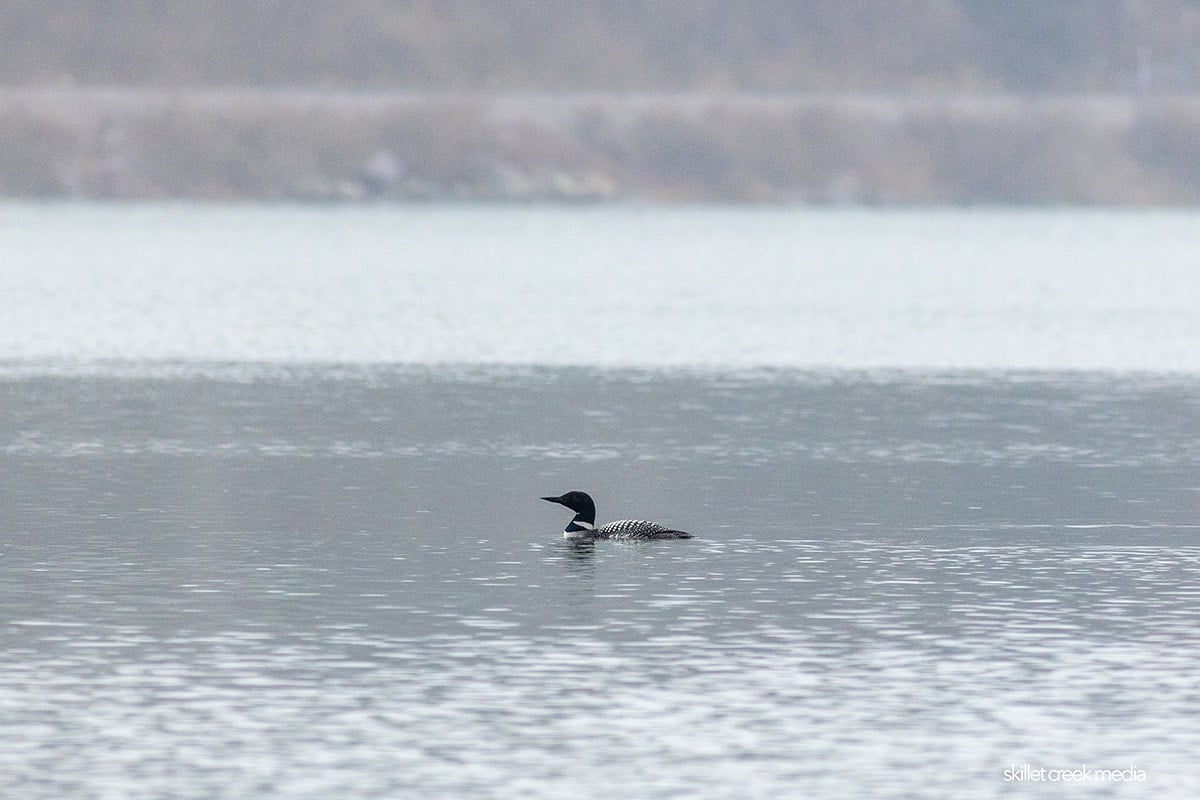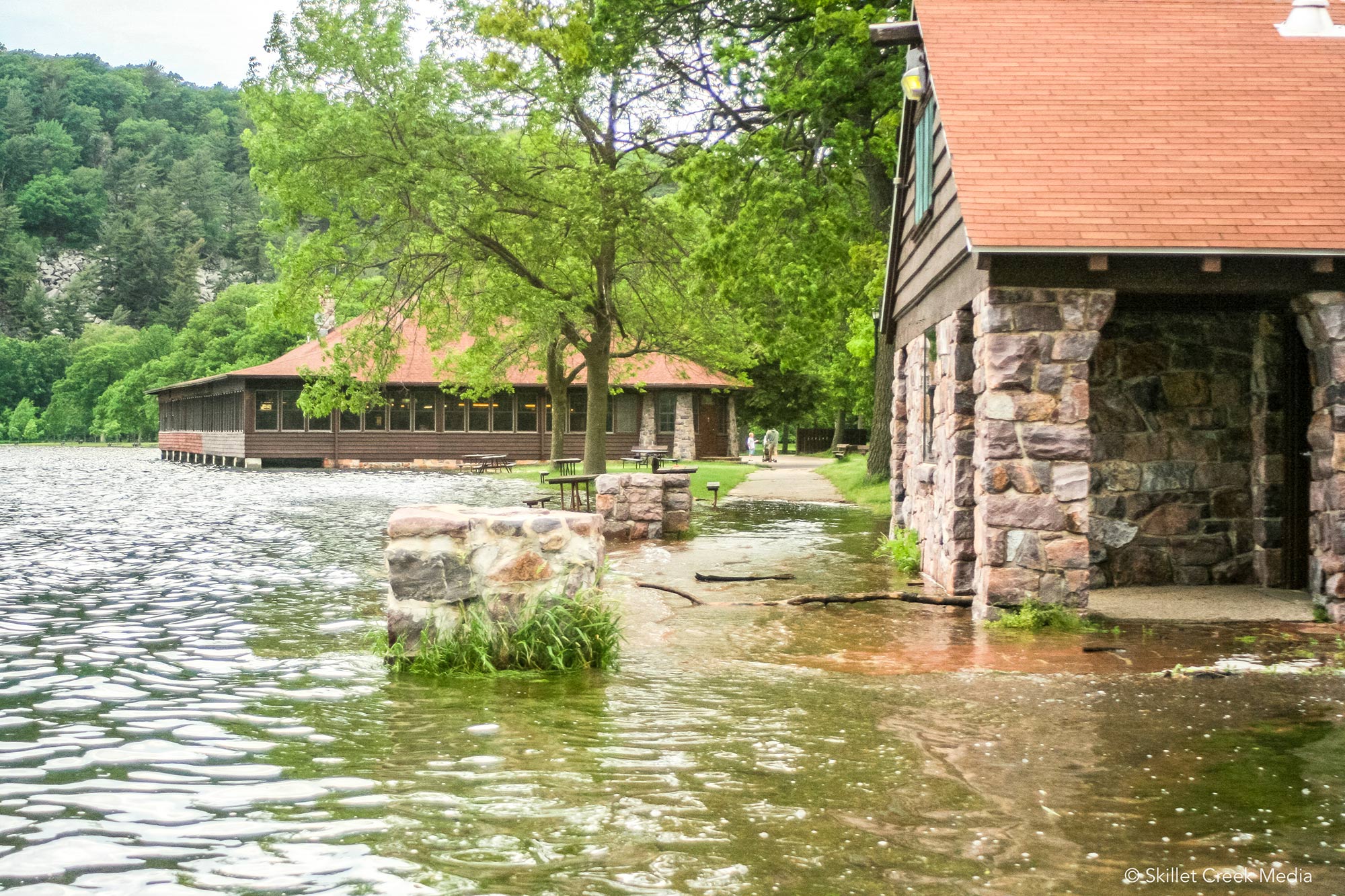Attention park visitors! The annual lake fly hatch is currently in full effect around Devil's…
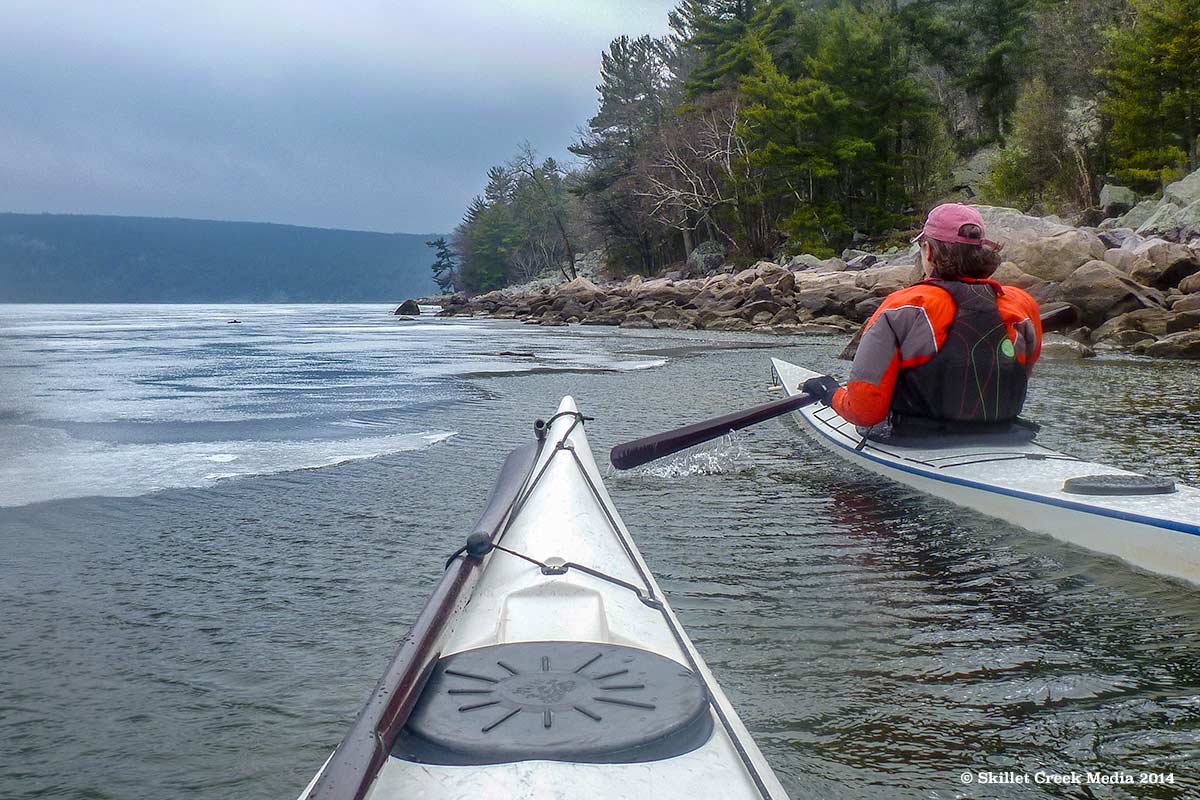
Updated 04/25 – When the ice finally comes off Devil’s Lake each spring, folks get excited to hit the water. But hold up there, cowboy—the water’s still cold. Waaay cold. Cold enough to kill you. No exaggeration.
If you fall out of your boat, canoe, or kayak in early spring without the right gear, you could die within minutes.
Let’s break it down. Cold water danger happens in stages. The first and most immediate threat is called cold shock. This occurs the moment your body hits cold water, and it can kill you within 3 to 5 minutes. That’s not a typo—minutes.
Cold shock has been documented in water as warm as 77°F. In early spring, Devil’s Lake water temperatures typically range between 40°F and 50°F. Sudden immersion can cause an involuntary gasp reflex—right when your head goes under. That can lead to immediate drowning. If you survive that, you’ll still be gasping for air, your breathing will skyrocket, and your muscles may seize up. Swimming will feel nearly impossible at first. Even if you’re fit and strong, cold water doesn’t care.
Just five ounces of water in your lungs can drown you. That’s less than half a cup. You don’t want to be in this situation.
If you manage to survive the first few minutes, now you’re in the swimming failure stage. You’ve got maybe 5 to 30 minutes—depending on your gear, your health, and how cold the water is—before your muscles lose control. Most people think they’ll just swim to shore. That’s a big mistake.
Every passing minute in cold water makes it harder to move. You’ll lose muscle strength and coordination. Even thinking clearly becomes difficult. Getting back in your boat is far more challenging than you’d think. Many people panic and try to swim for shore. But their arms and legs won’t cooperate, and their energy fades fast.
During this time, hypothermia is setting in. And even if you make it out of the water, you’ll need to warm up—quickly and properly. Check out this brochure about cold water survival from the American Canoe Association (ACA).
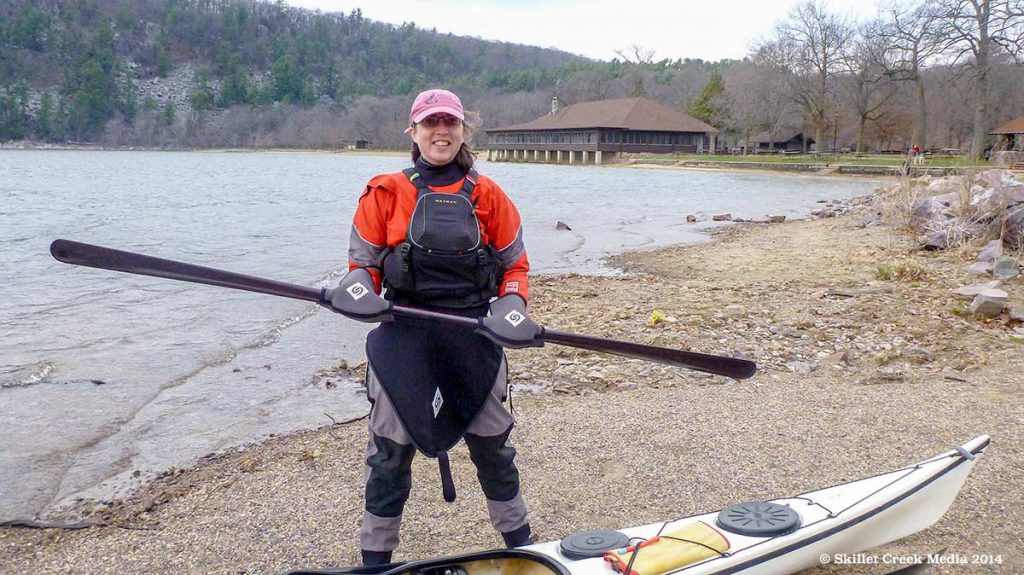
In the kayaking world, we say: “Dress for the water, not the air.” In the photo above, Devil’s Lake State Park naturalist Sue Johansen is doing exactly that. She’s wearing a full drysuit, which keeps cold water away from her skin. Under that, she’s layered up with moisture-wicking and insulating materials.
Sue’s life jacket is made for kayaking—comfortable and secure even if she ends up in the water. (Those cheap orange vests? They tend to fall right off in rough water.)
Her hands are protected by neoprene gloves and pogies, which wrap around the paddle to shield against wind and wet. Her feet? Covered by warm socks inside the drysuit, plus thick neoprene boots that add traction on slippery rocks.
She even wears a simple hat to help retain body heat. Every bit counts. Sue has also trained to roll her kayak upright without exiting it—an essential skill in cold water paddling.
No gear can guarantee safety. But the right equipment gives you time to think, act, and survive. You may be able to re-enter your boat, swim to shore, or call for help—assuming your phone or radio stays dry.
So how long do you need to wear gear like this? Well, how much of a risk-taker are you?
The truth is, Wisconsin’s waters can pose a cold water threat all year long. Even in mid-summer, a cold snap or spring-fed lake can surprise you. And it’s not just here—when I paddled around Puerto Rico by sea kayak back in 2007, water temps were around 80°F with air temps near 100°F. Still, after hours on the water, windchill made me feel cold. Some nights I’d be shivering in my tent below the palm trees, wrapped in a sleeping bag.
Hypothermia can sneak up on you, even when it’s hot.
The point is: Cold water is more dangerous than most people think. After a long Wisconsin winter, we’re all eager to get outside. But don’t let that excitement cloud your judgment. Early spring paddling is no joke.
Take it slow. Be smart. Stay safe.
If you’re looking to try kayaking, watch for nature center kayak tours at Devil’s Lake this summer. They’ll help you get started the safe way.
More Reading:
- Gasp! The Four Stages of Cold Water Immersion
- ColdWaterSafety.com
- Anatomy of a Bad Decision by Moulton Avery for Sea Kayaker Magazine.
- Hypothermia Chart – See how much time you may have depending on water temps…
- Always Dress for the Water Temperature
- Kayaking and Cold Water Immersion – by Eric Soares, co-founder of the Tsunami Rangers (Be sure to read the comments!)

For nearly 2 decades the Skillet Creek blog has focused on 3 main goals; To inspire you to visit and explore the Devil’s Lake region, to help you get the most your visit by sharing tips, events, and other helpful information. Lastly to advocate for our environment & wildlife and talk about how we can keep our natural areas amazing now and into the future! That last goal can sometimes cause controversy, but it’s the only way we can accomplish the first two. – Derrick Mayoleth, Owner.

